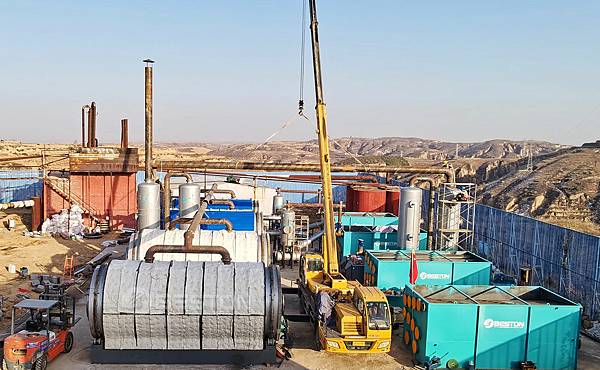In the pursuit of a sustainable future, the intersection of innovative technologies and environmental responsibility has paved the way for novel solutions. One such promising avenue involves the circular economy, where the concept of closing the loop on resource utilization takes center stage. Within this framework, the integration of pyrolysis system and continuous pyrolysis technology emerges as a transformative force, reshaping the landscape of plastic production and waste management.
The Essence of Circular Economy
The circular economy represents a paradigm shift from the traditional linear model of "take, make, dispose" to a more holistic approach of resource conservation and reutilization. In this context, plastic, a ubiquitous material with profound environmental implications, becomes a focal point for innovative strategies. The goal is not merely to curb plastic consumption but to establish a sustainable ecosystem where materials are continuously repurposed, minimizing the impact on the environment.
Pyrolysis System Unveiled
At the heart of this revolution lies the pyrolysis system, a sophisticated process that employs high temperatures in an oxygen-starved environment to break down complex plastic polymers into simpler hydrocarbons. Unlike traditional recycling methods, pyrolysis offers a distinctive advantage by not requiring the meticulous sorting of plastic types, allowing a diverse range of plastic waste to undergo transformation.
The utilization of continuous pyrolysis technology further amplifies the efficiency of this process. Continuous pyrolysis ensures a seamless and uninterrupted conversion of plastic waste into valuable resources. This technology's hallmark is its ability to sustain a constant flow, optimizing the production of pyrolysis oil while minimizing downtime.

Plastic Pyrolysis Oil: A Versatile Resource
The output of the pyrolysis process, often referred to as pyrolysis oil, emerges as a versatile and valuable resource with the potential to redefine plastic production. This oil, derived from the deconstruction of plastic waste, possesses properties that make it suitable for integration back into the plastic manufacturing cycle.
Closing the Loop: Integration in Plastic Production
The beauty of incorporating pyrolysis oil in plastic production lies in its ability to act as a substitute for conventional fossil-based feedstocks. By infusing pyrolysis oil into the manufacturing process, we not only reduce dependence on virgin resources but also mitigate the environmental toll associated with traditional plastic production.
Enhancing Sustainability: Environmental Implications
The integration of pyrolysis oil aligns seamlessly with sustainability goals. The reduction in carbon footprint is substantial, as pyrolysis oil emanates from plastic waste rather than newly extracted fossil fuels. This symbiotic relationship between waste and resource exemplifies the essence of the circular economy.
A Glimpse into the Future
As we navigate the intricate terrain of sustainable practices, the synergy between circular economy principles and cutting-edge technologies like the pyrolysis system foreshadows a future where plastic's lifecycle is no longer linear but cyclical.
In conclusion, the fusion of the circular economy ethos and advanced pyrolysis technologies represents a pivotal step towards redefining our relationship with plastic. The incorporation of continuous pyrolysis technology in the pyrolysis system not only streamlines the process but amplifies its impact, showcasing a promising trajectory towards a more sustainable and eco-conscious future.






 留言列表
留言列表
 {{ article.title }}
{{ article.title }}